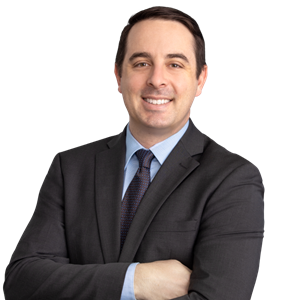
In With the New – Part Five
BBK’s New Law Guidance for a Well-Informed Start to 2023
In Part Five of our “In With the New” series, Best Best & Krieger LLP covers important new legislation related to the Brown Act, environmental matters, and unions. Here we provide takeaways and analyses of AB 2449, SB 1100, AB 2647, SB 379, SB 852, AB 1642, SB 886 and SB 931.
THE BROWN ACT
AB 2449
The Brown Act provides certain procedures through which a public entity may hold a teleconference meeting where one or more officials attend from a remote location via phone call or videoconferencing. In short, there are three possible avenues for holding teleconference meetings after the legislature’s recent adoption of AB 2449: (1) meeting under the “traditional” (more stringent) teleconference rules, codified at Government Code Section 54953(b); (2) meeting wholly or partially remotely under relaxed teleconferencing standards while a state of emergency exists, or state/local officials are imposing or recommending social distancing measures, codified at Section 54953(e); or (3) having less than a quorum of the directors attend remotely (under relaxed teleconferencing standards) when necessary for “just cause” or personal emergency reasons, codified at Section 54953(f).
The main distinction between the traditional teleconference rules and the newer rules available under AB 361 and AB 2449 is the public access and agenda posting requirements. The traditional rule is more stringent and requires public officials attending meetings remotely to (a) post a copy of the agenda at their remote location and publicize the address they are attending from and (b) allow the public to attend from their remote location, while the rules under AB 361 and AB 2449 are more relaxed and allow the public official to call in without making their location accessible to the public.
The current state of emergency in place to prevent the spread of COVID is set to expire on February 28, 2023, at which point option 2 will only be available if the local agency can meet every 30 days to re-adopt the resolution and is comfortable with making findings based on state- or local-recommended social distancing measures. In addition, public entities may continue to meet under the pre-COVID traditional teleconferencing rules (requiring agendas posted at all teleconference locations, each teleconference location identified on the agenda, quorum participation from within the entity’s boundaries, public allowed to attend remotely or in person). Alternatively, less than a quorum of the members of a public entity may attend remotely under new, more relaxed standards (no need to post agenda at teleconference location or identify teleconference locations in agenda) if the meeting is held in “hybrid” (partly in person, partly remote) format, and the teleconferencing official meets one of the following criteria:
- Just cause (caregiving need for child, parent, grandparent, grandchild, sibling, spouse, or domestic partner; contagious illness; physical or mental disability; traveling on official business). Use of these criteria is limited to two meetings per official in any calendar year.
- Emergency (physical or family medical emergency preventing in-person attendance). Use of this criterion, taken together with any remote attendance for just cause reasons, may not exceed three consecutive months or 20% of the entity’s regular meetings in a calendar year.
To rely on either criterion for remote attendance, an official must ensure they are able to participate through both audio and visual means (camera may not be turned off), and must identify on the record any individuals 18 years of age or older in the room with the official and the nature of their relationship. A legal alert discussing this bill in more depth may be accessed here.
SB 1100
Under SB 1100, legislative bodies now have an additional tool to address meeting disruptions. The Brown Act authorizes a legislative body to order the room cleared and continue in closed session if a group (or groups) willfully interrupts (or interrupt) the orderly conduct of the meeting, provided certain requirements are met. SB 1100 amends the Brown Act to provide that the presiding member of a legislative body may have an individual removed for disrupting a meeting of the body. Before removing any person, the person must be warned that their behavior is disruptive, and that continued disruption may result in their removal (however, no prior warning is required if the person is engaging in the use of force or threatening to use force against anyone). Behavior is otherwise “disruptive” if it disrupts or impedes the orderly conduct of the meeting.
AB 2647
Assembly Bill 2647 makes changes to Government Code relating to the Brown Act by changing the time, place, and manner for inspection of public meeting agendas by citizens. The current Brown Act only requires writings given to members of a governing board less than 72 hours before a meeting to be available for public inspection at the public office or location designated by the agency. AB 2647 would change that to require local agencies to requiring making those writings available to members of the governing board for inspection at a public office or location that the agency designates, unless the local agency meets the following requirements:
- An initial staff report or executive summary with staff recommendation relating to the agenda item, if any, is made available for public inspection at the office or location designated at least 72 hours before the meeting;
- Local agency immediately posts the writings on the local agency’s internet website in a manner that makes it clear to the public that the writing relates to an agenda item for an upcoming meeting;
- Local agency lists the web address of the local agency’s website on the agendas for all meetings of the legislative body of that agency;
- Local agency makes physical copies available for public inspection beginning the next regular business day of the local agency (at least 24 hours before the meeting). (Gov. Code § 54957.5 (b)(2)(B)).
Fiscal Impact: No appropriation, none stated, no reimbursement of costs.
******************************************************************************
ENVIRONMENTAL
Climate
SB 379
Under a law passed just a few years ago, cities and counties are required to administratively approve applications to install solar energy systems through a building permit or similar nondiscretionary process. Cities and counties are also required to have a streamlined permitting process for installing “small residential rooftop solar energy systems,” as defined by statute. Under SB 379, cities and counties (in consultation with local fire agencies) must implement an online, automated permitting platform (such as SolarAPP+) that does both of the following:
- Verifies code compliance and issues permits in real time, or allows the city or county to issue permits in real time, to a licensed contractor for a residential solar energy system up to 38.4 kilowatts and a paired residential energy storage system up to 38.4 kilowatts.
- Issues permits, or allows the city or county to issue permits, for residential solar energy systems and energy storage systems that SolarAPP+ is capable of processing.
Cities with populations under 5,000 and counties with populations under 150,000 (including all cities within such counties) are exempt from the requirements above, and need not take any further action on solar permitting. All remaining cities and counties must meet the above requirements by September 30, 2023. Cities with populations of 5,000 to 50,000 must meet the above requirements by September 30, 2024. All cities and counties must report to the Energy Commission when in compliance with these requirements. Cities and counties may impose fees to recoup their actual costs of processing and reviewing such permits.
SB 852
SB 852 authorizes cities, counties, special districts, or a combination of any of those entities (local agencies) to form a climate resilience district (CRD) for the purposes of raising and allocating funding for construction and operating expenses of eligible projects. “Eligible projects” include those that address sea-level rise, extreme heat, extreme cold, the risk of wildfire, drought, and the risk of flooding, as specified in Government Code Section 62302(b). While this bill deems each CRD to also be an enhanced infrastructure financing district (EIFD), which have broad authority to finance public capital facilities or other specified projects of communitywide significance, SB 852 limits CRDs to financing only eligible projects as discussed. Projects undertaken or financed by a CRD are deemed public works for which prevailing wages must be paid, and the CRD must obtain an enforceable agreement from developers or general contractors on the project that they (and all contractors/subcontractors) will use a skilled and trained workforce as defined by the Public Contract Code.
Local agencies that decide to form CRDs must adopt a resolution describing the intent, boundaries, projects, and goals for the district, and whether the CRD intends to use property tax increment revenues to finance projects. The local agency forming the CRD must also enact a resolution providing for the division of taxes of any participating entity pursuant to the procedures for the preparation and adoption of an infrastructure financing plan in EIFD law.
******************************************************************************
CEQA
AB 1642
AB 1642 exempts well projects (e.g., projects for the construction, maintenance, repair, or replacement of a well or a domestic well) from the California Environmental Quality Act (CEQA) until January 1, 2028, upon the satisfaction of the following conditions:
- The State Water Resources Control Board (State Board) designates the domestic well or water system to which the well is connected as high risk or medium risk in the State Board’s drinking water needs assessment.
- The project is designed to mitigate or prevent a failure of the well or water system that would leave residents who rely on it without an adequate supply of safe drinking water.
- The lead agency makes specific findings about the project, including, but not limited to, that the project is not designed to primarily serve agriculture or future growth, not affecting wetlands or sensitive habitats, and would not have a significant impact on the environment.
Before determining that a well project is exempt from CEQA, AB 1642 requires the lead agency to contact the State Board to determine whether claiming the exemption will affect potential federal assistance or federally capitalized financial assistance. The bill also requires the lead agency that uses the exemption to file a notice of exemption with the Office of Planning and Research and the county clerk.
******************************************************************************
HOUSING/CEQA
SB 886
Senate Bill 886 exempts certain qualifying student housing projects from CEQA until January 1, 2030. To be eligible for the exemption, the housing development project must be housing facilities intended to be occupied by students, faculty, or staff of one or more campuses owned by the University of California or the California Community Colleges on real property owned by the public university. SB 886 specifically outlines certain criteria that would not exempt the project from CEQA, such as location on farmland and wetlands, or require demolition of certain types of housing. SB 886 requires that the University of California and the California Community Colleges hold at least one noticed public hearing to hear and respond to public comments before determining that the university housing development project is exempt under SB 886. Finally, SB 886 requires that the University of California, the California Community Colleges, or relevant public agency, to make a determination that all construction impacts of the project have been fully mitigated before the issuance of a certificate of occupancy for each building within a project, obtain the LEED certification for the building, and issue a notice of that determination. That lead agency must file the LEED certification and the notice with the Office of Planning and Research and the county clerk. The Office of Planning and Research and the county clerk must make the certification and notice available to the public.
******************************************************************************
UNIONS
DLSE
SB 931
Existing law pursuant to Government Code Section 3550 prohibits public employers from deterring or discouraging employees or applicants for public employment from becoming or remaining members of an employee organization, authorizing representation by an employee organization, or authorizing dues or fees to an employee organization.
SB 931 adds Section 3551.5 to the Government Code that authorizes public employee unions to bring claims against public employers before the Public Employment Relations Board (PERB) for alleged violations of Government Code Section 3550. Public employers who violate Section 3550 may be subject to civil penalties of up to $1,000 for each affected employee, not to exceed $100,000 in total, and may be subject to attorney’s fees and costs. SB 931 also provides that PERB will assess the public employer’s annual budget, the severity of the violation, and any prior history of violations by the public employer when assessing civil penalties under Section 3551.5.
Public employers should be aware that this bill gives public employee unions that are subject to PERB jurisdiction standing to bring claims for alleged violations of Section 3550. Public employers — specifically small public employers — should be cautious and be sure to seek legal counsel when navigating the collective bargaining process, because the monetary penalties set forth under SB 931, in additional to an attorney’s fee award, may be significant.
Disclaimer: BBK Legal Alerts are not intended as legal advice. Additional facts, facts specific to your situation, or future developments may affect subjects contained herein. Seek the advice of an attorney before acting or relying upon any information herein.
Key Contacts










